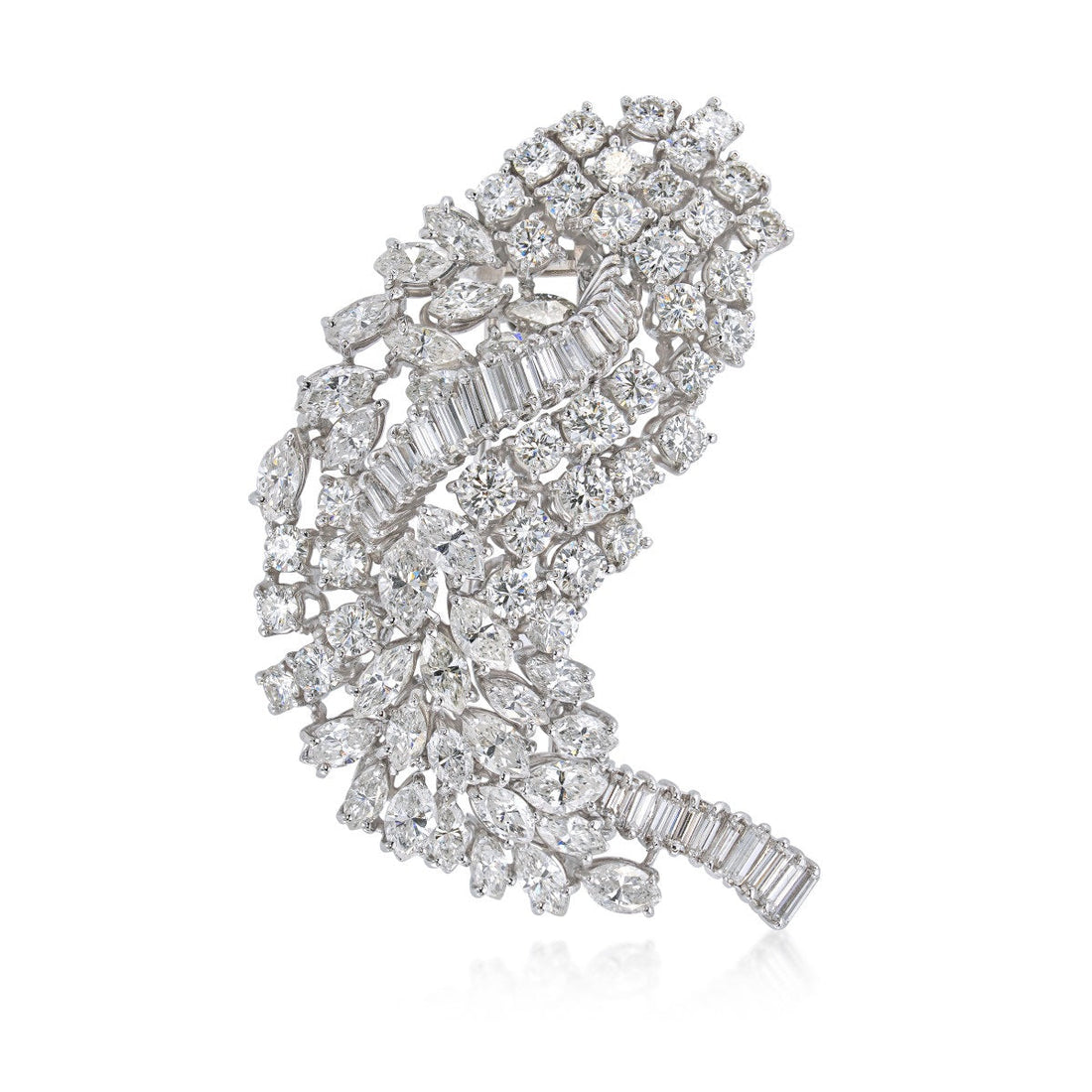You’ve heard of them all, Cartier, Tiffany & Co. and Van Cleef & Arpels, the movers and shakers of the jewelry world. However, there was a time when these powerhouse jewelers were not so well known and in some cases holding on through tough economic and political times to blossom into the businesses that they are today. Here’s an overview of how the big three got started and where they are now.
Cartier
Founded by Louis-Francois Cartier, 1847, Paris.
Iconic Jewels: Tutti Frutti, Panthers, Trinity Collection, Love Bracelet, Tank Collection

Louis-Francois Cartier launched his company when he bought the watchmakers store where he had apprenticed. Soon Empress Eugenie, the wife of Napoleon III was a client, with other aristocrats following her lead.
In 1874 Louis-Francois’ son, Alfred, took over the company. In 1899, Alfred moved the store to Rue de la Paix, an area filled with prominent fashion houses. Alfred had three sons, Louis, Pierre and Jacques, all of whom joined the business and were instrumental in Cartier’s international expansion.
Louis, ran the Paris operation, a London workshop was set up in 1902 and a full store followed in 1909 with Jacques in charge, the same year Pierre arrived in New York City to open a store. It was the Art Deco movement a few years later that really put Cartier on the map as a premier design house. Inspired by Asian and Islamic art, Cubism, the Ballets Russes and the discovery of King Tutankhamen’s tomb in 1922, Cartier created exceptional jewelry. In the following decades, the firm continued to expand and create innovative jewelry, with the family controlling the business until the early 1970s. Cartier is currently owned by Compagnie Financière Richemont and continues to produce iconic designs based on its archives as well as new innovations.
Tiffany & Co.
Founded by Charles Lewis Tiffany and John P. Young, 1837, New York City.
Iconic Jewels: Tiffany Engagement Ring, Tiffany Diamond, Bird on A Rock

Charles Lewis Tiffany and his business partner, John P. Young, opened a stationery store, Tiffany & Young, in 1837 in lower Manhattan specializing in luxury goods including some jewelry.
In 1848, Tiffany and Young travelled to Europe, where they purchased a massive quantity of diamonds from the aristocracy and brought them back to New York. It was the first time that Americans could easily purchase diamonds in the U.S. In 1853 the store was renamed Tiffany & Co. when Charles Lewis Tiffany took over the business.
In 1886, to best showcase diamonds, the six prong Tiffany Setting was introduced. The setting allows more light to flow through the gem, giving it more sparkle. It remains one of the most popular engagement ring styles today.
After Charles Lewis Tiffany passed away in 1902, his son Louis Comfort Tiffany took charge. He became the company’s first design director and a leader and influential designer in the Art Nouveau movement.
In more recent years several designers have brought their talents to the firm, including Jean Schlumberger, Donald Claflin, Angela Cummings, Elsa Peretti, Paloma Picasso and architect, Frank Gearhy. Tiffany & Co. has also introduced four new gemstones to the world: Kunzite, Morganite, Tanzanite and Tsavorite.
Throughout its history, Tiffany & Co. has been a leader in design and innovation remaining one of the most successful and prestigious American jewelry houses today. In January 2021, luxury product group LVMH Moet Hennessy Louis Vuitton, acquired Tiffany & Co.
Van Cleef & Arpels
Founded by Alfred Van Cleef and Estelle Arpels, 1906, Paris.
Iconic Jewels: Mystery Setting, Zipper Necklace, Balllerinas and Fairies, Alhambra, Minaudiere

Estelle’s father was a lapidary and Alfred’s father was a gem dealer. They opened their store across the street from the Ritz Hotel at 22 Place Vendome, where it still remains. The couple was joined in the business by Estelle’s three brothers: Charles, Julien and Louis. The firm is known for its technical innovation in design, including the patented Mystery Setting and the Zipper necklace, which actually zips. Another innovative creation was the minaudiere, a jeweled box, which had compartments for lipstick, powder, cigarettes, lighter and money.
The jewelry house rose to prominence during the 1920s and 1930s with jewelry inspired by Japanese, Chinese, Indian and Egyptian motifs. In the 1960s the firm introduced its Ballerina brooches, which inspired choreographer George Balanchine to create the three part ballet “Jewels”, which is still performed today. In addition, Van Cleef & Arpels offers classes on jewelry to the public through its L’Ecole School of Jewelry Arts located throughout the world. Its Dance Reflections by Van Cleef & Arpels supports choreographers in creating new work. In 1968, the firm launched its Alhambra collection, a design based on the four leaf clover. It was meant to be more casual for daywear while also bringing luck.
Van Cleef & Arpels remained a family affair until it became fully owned by Swiss luxury group Richemont in 2003.
When you find a piece of vintage jewelry signed Cartier, Tiffany & Co. or Van Cleef & Arpels you can be assured that it showcases innovative design, spectacular gemstones and the finest artistry.
Top of Page: Diamond and platinum brooch, signed Van Cleef & Arpels, circa 1955.
Diamond and platinum Art Deco bracelet, signed Cartier, French; Diamond, enamel, 18-karat gold and platinum Art Deco brooch, signed Tiffany & Co., circa 1930; Diamond and 18-karat gold minaudiere, signed Van Cleef & Arpels, circa 1960s.
Authored by Amber Michelle

